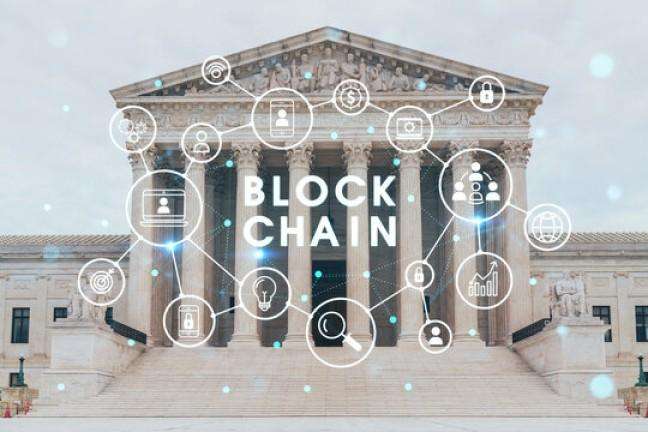Blockchain technology has evolved at a rapid pace over the past decade. Initially, blockchain was just a novel idea, powering Bitcoin. Over time, it has seen significant improvements, culminating in the emergence of the fifth generation of blockchain technology. As an investment expert with a keen interest in emerging technologies, I have spent considerable time studying this new iteration, and I am excited to share my insights with you. In this article, I will break down what 5th generation blockchain is, how it differs from previous generations, and its implications for various industries and investments.
Blockchain has seen four major iterations, each addressing a distinct set of challenges. From Bitcoin’s first generation to Ethereum’s second, and the scalability improvements brought by third and fourth-generation projects like Polkadot and Cardano, each generation has brought innovations to the table. The fifth generation aims to take these innovations to the next level by improving scalability, energy efficiency, and integration with the broader digital economy. Let me walk you through the core concepts of 5th generation blockchain, its key features, and why it’s important.
Table of Contents
What is 5th Generation Blockchain?
5th generation blockchain is the latest evolution of blockchain technology. It aims to address the primary shortcomings of previous generations—scalability, interoperability, and energy consumption. Traditional blockchains like Bitcoin and Ethereum have limitations that hinder their widespread adoption. They struggle with scalability (handling large numbers of transactions per second) and energy efficiency (due to proof-of-work consensus mechanisms). The 5th generation blockchain promises to solve these issues through advanced consensus algorithms, interoperability solutions, and a focus on sustainability.
One of the standout features of the 5th generation blockchain is its ability to support a broad range of decentralized applications (dApps) while maintaining high throughput and low environmental impact. By improving on the underlying architecture, the 5th generation blockchain allows for faster, more secure transactions with lower energy consumption, making it a viable alternative for global adoption.
Key Features of 5th Generation Blockchain
Let me break down the key features of 5th generation blockchain technology in more detail.
1. Scalability
Scalability has been one of the most significant challenges for previous blockchain generations. Bitcoin’s blockchain, for example, can only handle about seven transactions per second (TPS), while Ethereum can handle around 30 TPS. In contrast, 5th generation blockchains like those developed by projects such as EOS and Solana are designed to handle thousands, even millions, of transactions per second.
By utilizing advanced consensus mechanisms such as delegated proof-of-stake (DPoS) and Byzantine Fault Tolerance (BFT), 5th generation blockchains can achieve this level of scalability. These mechanisms allow for faster transaction processing, reducing bottlenecks and increasing the overall efficiency of the blockchain network.
2. Interoperability
Blockchain interoperability refers to the ability of different blockchain networks to communicate and share data with each other. This is a critical feature for the 5th generation blockchain, as it allows for a connected ecosystem of different blockchains to work together seamlessly.
Previous generations of blockchain struggled with interoperability. For instance, Bitcoin and Ethereum run on separate networks that cannot directly communicate with each other. With 5th generation blockchain, projects like Polkadot are tackling this issue by using relay chains and parachains, enabling cross-chain communication.
3. Sustainability
Energy consumption has long been a criticism of blockchain technology. The energy-intensive proof-of-work (PoW) mechanism, used by Bitcoin and Ethereum, has been a major concern for environmental advocates. 5th generation blockchains prioritize sustainability by using energy-efficient consensus mechanisms like proof-of-stake (PoS) and other green alternatives.
For instance, Ethereum’s transition from proof-of-work to proof-of-stake (via Ethereum 2.0) is an example of a move toward more sustainable blockchain practices. 5th generation blockchains go a step further, ensuring that networks not only reduce energy consumption but also promote eco-friendly operations.
4. Security and Privacy
Security is a cornerstone of blockchain technology, and the 5th generation does not fall short. 5th generation blockchains are built with enhanced security features, using cryptographic techniques like zero-knowledge proofs (ZKPs) to ensure both data privacy and the integrity of transactions.
Zero-knowledge proofs allow a party to prove that they know something (like a password) without revealing the actual information. This is a game-changer for privacy in blockchain, as it allows for the validation of transactions without compromising sensitive data.
5. Decentralized Finance (DeFi) and Smart Contracts
5th generation blockchains continue to support decentralized finance (DeFi) applications and smart contracts, with improvements to the underlying infrastructure. These blockchains provide more robust platforms for the development of decentralized applications (dApps), facilitating more efficient, secure, and scalable financial services without the need for intermediaries.
6. Quantum Resistance
One of the emerging threats to blockchain technology is quantum computing. Quantum computers could potentially break the cryptographic security models that underpin current blockchains. However, 5th generation blockchains are proactively preparing for the future by incorporating quantum-resistant algorithms to protect against this threat.
Comparison: 5th Generation Blockchain vs. Previous Generations
To give you a clearer idea of how the 5th generation stacks up against its predecessors, I’ve put together a comparison table highlighting key differences.
| Feature | 1st Generation (Bitcoin) | 2nd Generation (Ethereum) | 3rd Generation (Cardano, Polkadot) | 5th Generation (EOS, Solana, Polkadot) |
|---|---|---|---|---|
| Consensus Mechanism | Proof-of-Work (PoW) | Proof-of-Work (PoW) | Proof-of-Stake (PoS), Delegated Proof-of-Stake (DPoS) | PoS, BFT, Hybrid Algorithms |
| Transaction Speed (TPS) | ~7 | ~30 | ~100 | 1000s – 10,000+ |
| Energy Consumption | High | High | Moderate | Low |
| Interoperability | None | Limited | Improved | High (Cross-chain compatibility) |
| Smart Contract Support | None | Yes | Yes | Yes |
| Security | High | High | Very High | Very High |
| Sustainability | Low | Moderate | High | Very High |
From this table, it’s clear that 5th generation blockchains excel in scalability, energy efficiency, interoperability, and sustainability compared to earlier iterations.
Examples of 5th Generation Blockchain Projects
Several blockchain projects are leading the way in the 5th generation. I’ll briefly cover some of the key players that are shaping the future of decentralized networks.
1. Solana
Solana is one of the fastest-growing 5th generation blockchains, known for its high throughput and low transaction costs. With a theoretical transaction speed of up to 65,000 transactions per second, Solana has positioned itself as a scalable solution for decentralized applications, including DeFi, NFTs, and gaming.
2. EOS
EOS is another prominent 5th generation blockchain, designed for dApp development. It uses a delegated proof-of-stake (DPoS) mechanism, enabling fast and scalable transactions while minimizing energy consumption. EOS has been touted as one of the best solutions for enterprises seeking to adopt blockchain technology.
3. Polkadot
Polkadot is an interoperability-focused blockchain that allows multiple blockchains to communicate with each other. It connects different networks through a central relay chain, ensuring cross-chain compatibility and security. Polkadot is a prime example of how 5th generation blockchains can facilitate a multi-chain ecosystem.
Investment Implications of 5th Generation Blockchain
As an investor, it’s essential to understand the potential of 5th generation blockchains. These blockchains are not only designed to overcome the limitations of earlier versions, but they also offer significant investment opportunities. Projects such as Solana, EOS, and Polkadot have gained considerable attention from venture capitalists, blockchain enthusiasts, and large enterprises looking to build on the latest infrastructure.
From a risk management perspective, the widespread adoption of 5th generation blockchain could lead to rapid growth in the blockchain industry. The scalability improvements alone will open doors for new decentralized applications that could transform industries like finance, healthcare, and supply chain management. Furthermore, the increased focus on sustainability aligns with the global trend of environmental consciousness, making these technologies even more appealing.
However, I must also caution that, like any emerging technology, 5th generation blockchain projects carry inherent risks. Technological challenges, regulatory uncertainties, and market volatility can all impact the growth of these projects. Therefore, thorough research and a diversified investment strategy are crucial when considering exposure to blockchain technology.
Conclusion
The 5th generation blockchain represents a significant leap forward in the evolution of decentralized technology. It promises to address the scalability, energy efficiency, and interoperability challenges that have plagued earlier generations, making it a viable solution for the future of decentralized applications.
While the future of blockchain is still unfolding, the 5th generation has the potential to revolutionize various industries and offer exciting investment opportunities. By embracing these advancements, we can expect faster, more secure, and more sustainable blockchain networks that will play a crucial role in shaping the digital economy.
As with any new technology, it’s important to approach 5th generation blockchain with a balanced perspective. The benefits are clear, but so are the risks. I encourage you to explore this space further, stay updated on the latest developments, and carefully consider the implications for your investment strategy.
By understanding the nuances of 5th generation blockchain, you can position yourself to make informed decisions and be part of the next phase of the blockchain revolution.





